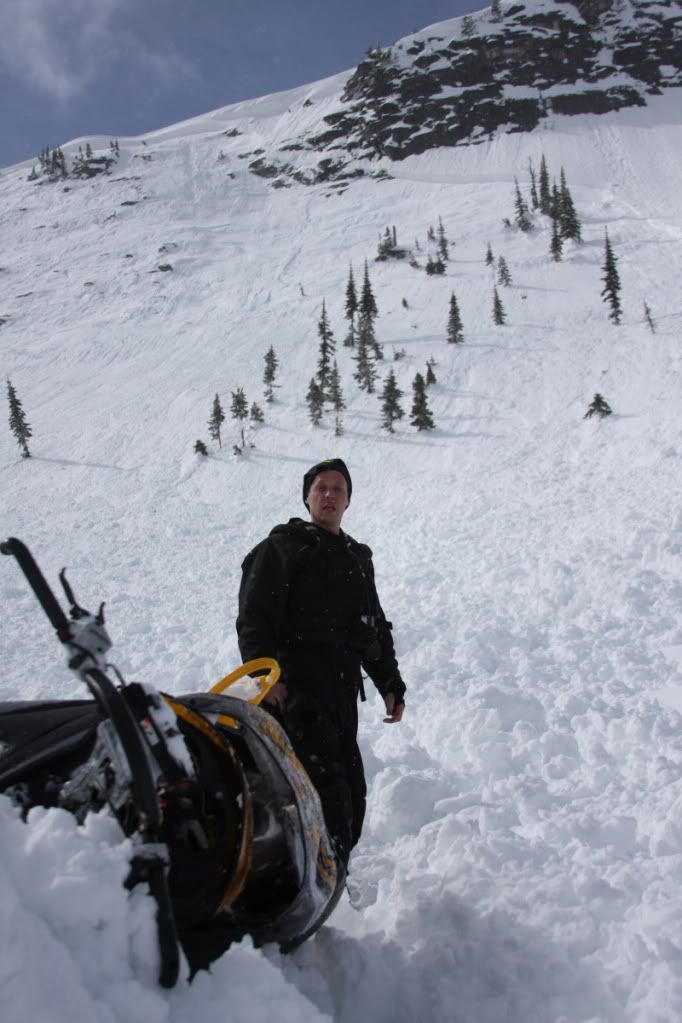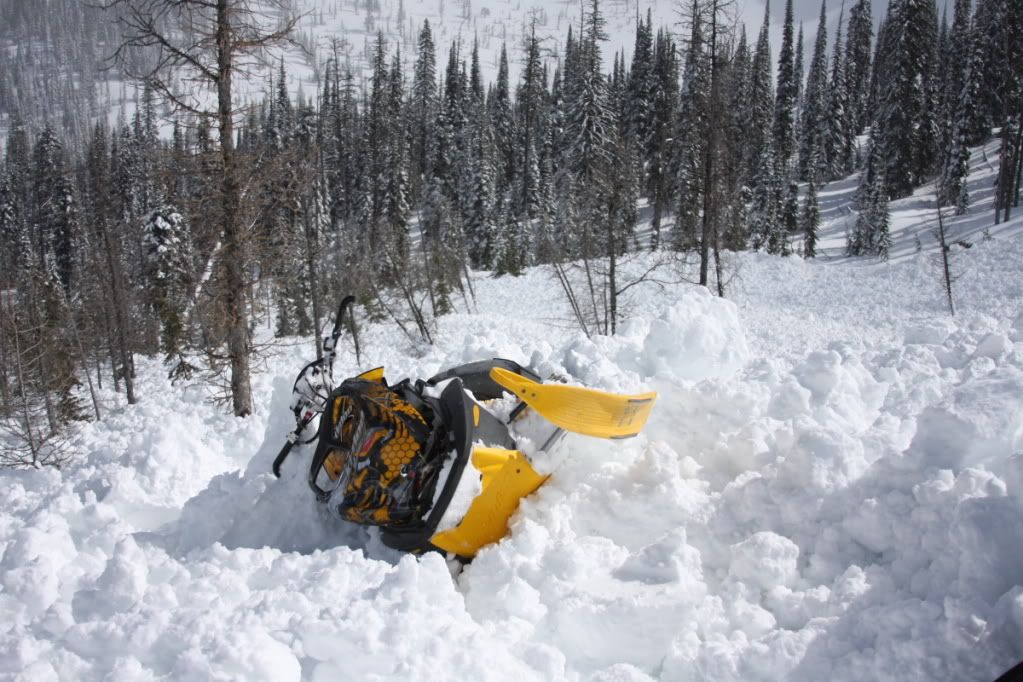It is very discouraging to see guys who have responded to this thread in a manner that says they either don't truely understand how an avalanche works, or how an air bag can increase your odds of survival.
I was caught in an avalanche two years ago east of Togwotee Mtn Lodge. I triggered the avalanche, was caught in the slide and so was a very good friend of mine. We did not own ABS bags at that time. His beacon was at home on the work bench. Thankfully, we both have and continue to ride to see another day. I am not proud or pleased with the choices I made that day, but very thankful to learn from it and help others to learn in the hopes that less and less people will ever get caught. My responses below are based on knowing what it really feels like -
There are questions above about how the ABS bags work and what happens - when you pull the cord and the bags deploy, they make you (your body, your gear and the bags) one of the largest "things' tumbling down the hill. The larger you are, the better the chance that you will stay at the top and come out on top at the bottom. MIke Duffy stated that it may help to hang onto the sled - it makes you bigger yet. But you also risk getting hit by it.
I understand the idea that an ABS bag makes you "float" like in the water but that is misleading as snow is not a liquid. Bouyancy (sp?) doesn't apply when there isn't water in liquid form.
Bright orange color is a big flag, making you easier to find when the dust settles.
Do you have time to pull the cord ? YES !! I had plenty of time to realize that I was moving, but not under my own power (i.e. my feet were still realtive to the snow pack). I had time to think "most people get hurt when they hit solid objects, and I'm heading for the trees" I tumbled for quite some time after that. More than enough time to pull that trigger 10 times over. Plenty concious during the whole slide.
When I stopped with the top of my helmet and one arm out of the snow - more snow kept coming down, but not enough to bury me. Somewhere I smashed my knuckle against something, but that was the extent of it - a sore hand.
Up to this point, I managed nothing more than a wild ride. That's when the real horror starts. While stuck in the snow, but very aware of what was going on around me - I had to listen to my buddies father, brothers and freinds call out his name, unable to see where he went. He was buried. Fortunately, a local guide was close buy and came to help. But after he foudn out that my buddy didn't have a beacon, he asked how many had probes ? 3 out of 8 had them. I was one, but still stuck in the snow and my sled 1/4 mile away (not in the slide). The guide found my buddy with his probe within 20 feet of his sled (one ski was sticking out of the snow) He was buried 2 feet down, under an 8 in diameter tree that the slide took out. He went unconcious just before he was uncovered. He regained conciousness quickly and had a cracked collar bone and a gash on the back of his head. That's it.
Many lessons learned but here are the most important with regards to equipment that all should think about -
Beacons, probes, shovels & ABS packs. Know how to use them. Never go out without them. Pack them in the right places (read on).
When I sell ABS packs at snow shows, I see people ask about and watch as they put their shovel in the ABS pack. I ask if they have a second shovel on the sled - "no, it's right here in the ABS pack". Think about it, when you get stuck on the side of a hill, to get the shovel, you remove the pack - that pack can't help you survive if it isn't attached to you correctly. So keep your shovel on your sled. Same for the probe. Don't ever take off the pack until you are on ground that won't slide and you aren't below a slide area (in the run out path).
Want to go all out? Bring a second probe and shovel for someone in the group who didn't think to bring theirs. Then you don't have to listed to the expert ask "who has probes", knowing they will help find your buddy - but no one has them.
"Here's to having the right gear and knowing how to use it".

Don't wait until you are caught in a slide to be convinced like I was. You may not get a second chance.
For those that have been caught - we don't have anything cool to talk about - but we do have a story that can be used to scare/encourage others into making better decisions.

Thanks for listening/sharing.
Finally - I intentionally left out snow conditions in order to maintain focus on the equipment side.


 Don't wait until you are caught in a slide to be convinced like I was. You may not get a second chance.
Don't wait until you are caught in a slide to be convinced like I was. You may not get a second chance.

